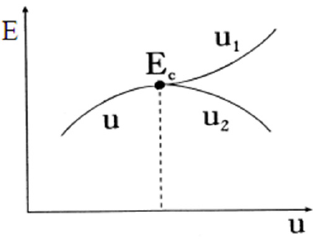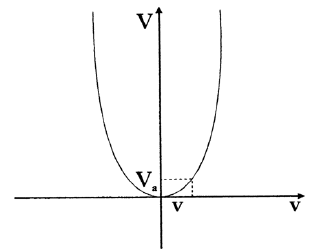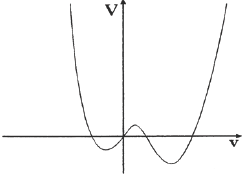- Submissions

Full Text
Advances in Complementary &Alternative Medicine
The Chronic Diseases Require Nonlinear Mathematical Description
M Kuman*
Holistic Research Institute, USA
*Corresponding author: M Kuman, PhD, Holistic Research Institute, 1414 Barcelona Dr, Knoxville, TN 37923, USA
Submission: December 18, 2017; Published: February 21, 2018

ISSN: 2637-7802Volume1 Issue3
Abstract
Our body is organized in space (in tissue specific organs) and in time. Since stress creates delays because the body needs to stop its work and mobilize for response to the stressor, stress would influence the organization in time. Since the periodic reactions in an organ called biorhythms exhibit extreme flexibility and adaptability, they must be nonlinearly connected. However, regardless how flexible and adaptable the system of biorhythms is, the genetically inherited weak organ with lowest integration among its biorhythms would be the first to fail to adapt under strong or prolonged stress. This would result in mal-adaptation manifested as chronic disease. Thus, only nonlinear mathematics can describe the onset of chronic diseases. In a young body, the biorhythms are strongly integrated and the so-called 'potential curve' in their nonlinear mathematical description is expected to be a 'potential strong spring'. However, to better adapt to stressors with aging the body lowers the energy of integration among its biorhythms. This makes the organs' system of biorhythms more flexible and adaptable, but leaves it more vulnerable to biorhythm disintegration by stress, which leads to chronic diseases. For this reason, the so-called 'potential curve' in the nonlinear mathematical description for the elderly is expected to be a 'potential weak spring'. Since the weak spring fails more easily under stress, chronic diseases are more frequent among elderly.
Keywords: Stress; Chronic diseases; Mal-adaptation as chronic diseases; Increase of chronic diseases with aging; Better adaptation with aging
Introduction
'Chronic' means 'slow' and the onset of chronic diseases under prolonged stress is a slow process. However, not only is the onset of chronic diseases slow, the healing ofchronic diseases is slow process. The only way to cure a chronic disease is with acupuncture, but it requires a long series of (14 to 20) daily acupuncture treatments M Kuman [1]. Strong or prolonged stressors lead to chronic diseases. Prolonged stressor is either a stressor with long duration or different stressors acting through relatively short time intervals. Since the body responds to different stressors in the same way-it mobilizes for response to the stressor-this allows accumulation of the nonspecific impacts of different stressors. Selye [2] was called the Father of Stress because he spent 40 years of his life studding stress. He is also the Godfather of stress because he borrowed the name stress from engineering and first applied it to psychological stress. He found that the same stress causes chronic disease of different organs in different individuals.
Selye [2] explained this on p. 61 of his book Stress in Health and Disease in the following way: "... stress might hit one or another organ selectively, depending upon an inherited (or acquired) predisposition, which made this the weakest part of the body" [3]. Stress delays the due biorhythms because the body needs to stop its habitual work and mobilize for respond to the stressor. For periodic reactions, these delays are called phase shifts. Thus, stressors cause phase shifts (delays) in the biorhythms of the body. If strong or prolong stress causes chronic disease of the genetically inherited weak organ first, this is because the energy of this organ is low and as a result its biorhythms are more weakly integrated than in the other organs.
Just as the gradual pull of a thread leads to a break up at the weakest place where the tension accumulates, the delays or phase shifts caused by prolonged stressors accumulate in the genetically inherited weak organ, which does not have enough energy to propel them. After a while, the functioning of the genetically weak organ would collapse and the organ would suffer chronic disease. Thus, the genetically inherited weak organ, being the weakest, is the first to break down under prolonged stress. The weaker the biorhythm integration of the genetically inherited weak organ, the easier stress will destroy its biorhythm synchrony. When the stress surpasses the level, which the weak organ can tolerate, called ultimate stress, its existing order of biorhythms cannot be sustained any more. Then the genetically inherited weak organ would try to evolve to a new equilibrium state with a new type of biorhythm order with more weakly integrated biorhythms, which would be better adapted to stressors. However, since its biorhythms are more weakly integrated, its functioning would be even more sluggish and the organ will mal-function or suffer chronic disease.
Pathology starts when the body fails to compensate for a critically large phase shift caused by strong stressor or accumulated prolonged stress. Unstable, desynchronized, or disintegrated biorhythms are specific for pathology [3]. Since the chronic diseases result from strong or prolonged stress, which dragged the organ too far from equilibrium, according to the non-equilibrium theory, each chronic disease is a stable far-from-equilibrium state. The critically large phase shift, beyond which the organ loses stability and with time drifts to a state of pathology or chronic disease, is called bifurcation point. Bifurcation point is defined in the non-equilibrium theory as a point at which a new solution branches (Figure 1), which in our case is the state of pathology or stress-induced chronic disease. With aging, the life stress wear out the body and makes all its biorhythms less and less integrated. The less integrated biorhythms in the elderly explain why elderly are more frequently victims of chronic diseases and are more sensitive to noise, light, drugs, and so on [3]. Statistics shows that after age 70, 85% of the elderly suffer one or more chronic diseases [4]. These features of the elderly are finding their natural explanation with the offered here 'potential weak spring' reflecting the weaker integration of the biorhythms in the elderly. The weakened biorhythm integration helps the elderly to adapt better to stressors [5], but makes them more frequent victims of chronic diseases.
Figure 1: Bifurcation is the appearance of two possible solutions.

Nonlinear Mathematical Approach
The body is a complicated system, which depends on many ever-changing parameters-internal and external. Its mathematical description will be a complicated high dimensional problem. Fortunately, for a very wide class of high dimensional problems the bifurcations take place in two-dimensional space [6]. In these cases, using the projection method one can transform the high dimensional problem into a low dimensional problem. Each chronic disease would be a new solution for the body, which bifurcates from the state of health when the body reaches the critical level of ultimate stress, which the genetically inherited weak organ can tolerate. If so, one can describe the transfer health - disease with a two dimensional equation.
Let function u describes the state of the genetically inherited weak organ. At this level we are not going to specify the type of this function. In the one-, two-dimensional, etc. cases the evolution of the system with time t will be described by the equation

Where F is a nonlinear operator or function, u describes the state of the system, E-its energy. E is the energy of integration of the biorhythms in the genetically inherited weak organ [7]. E is a genetically inherited value, which decreases with aging because strong or prolonged stressors gradually consume it. While strong or prolonged stressors through creating large delays disintegrate the system of biorhythms of the genetically inherited weak organ, which leads to pathology or chronic disease of this organ, mild stressors stimulate or add energy to it. Such mild stressors are the acupuncture treatments, which recharge the organ energetically and bring it back to the state of health. They add to the organ the energy consumed by the stressors and in this way they cure the stress-induced pathology called chronic disease [8].
In the one-dimensional case u(t) is scalar, F(u,E,t)-scalar function. In the two-dimensional case u(t) is vector, F(u,E,t)-vector function, etc. Let us consider the autonom case, i.e. the case when F does not depend directly on t. Then

In this particular case the solution of the equation is harmonic with a period T

Let the state u(E, t) be influenced by a perturbation v (a weak stressor). Then the evolution equation will be

The solution of this evolution equation is periodic or harmonic (with a period T) u(E,t)+v(t)=u(E, t+T*)+v(t+T*); T*=nT(n=1,2,...); At v->0 the solution u+v is named sub-harmonic (sub-harmonic frequencies are observed in plants, animals and people [3] and could find their natural explanation here). If v->0at t->∞ra , the solution u(E,ra) is called asymptotically stable. In the corresponding functional space (u,E), the solution u(E,t) may bifurcate at the critical point (Ec,tc), which means the solution u(E,t) gives origin of two branches u1(E,t) and u2(E,t) (Figure1). At the critical point Ec in a critical moment tc u1 (Ec ,tc) = u2 (Ec ,tc).
Let us try to write in a more concrete form the equation of evolution. Let us expand F in a Taylor's row around the point u0, which is influenced by a perturbation v


In the simplest one-dimensional case, when u(t) is scalar, and F(u,E,t) scalar function [6], the evolution equation will be

Hence

We will consider V as a 'potential', because this mechanical interpretation is useful and more visual, regardless of the fact that according to the non-equilibrium theory far-from-equilibrium systems cannot be described in terms of a potential [8,9].
When the perturbation v is small, we can retain only the linear term

Then the solution will be V=V0 exp Fu(E,u)t. The condition for solution stability is Fu<0. When |F| is large (far from zero), the solution (the 'potential') is stable. When |F| is small (near zero) the solution (the 'potential') is unstable [9].

When the parameter a is large, the 'potential' V is steep, V has the shape given in Figure 2a and the solution is stable. System, described by such 'potential', can be driven out of equilibrium with difficulties. This is a 'potential strong spring'.
Figure 2a: The potential strong spring of the young people.

Young people suffer fewer chronic diseases. "The resistance remains high through the early twenties and to some extent in the thirties" [5]. The higher resistance of young people to chronic diseases [7] will be described with a 'potential strong spring' of type 2a. The higher resistance of young people to chronic diseases means that their biorhythms are more strongly integrated (potential strong spring). For that reason, prolonged stress will not desynchronize them easily because the strong binding forces among the biorhythms will easily bring the system back to norm. Acupuncture clinical practice shows that even when strong or prolonged stressors drive a young person to a state of chronic disease (far-from-equilibrium state), the cure of this chronic disease is easier. This is because young systems of biorhythms return back to norm relatively easy (their potential is a stronger spring than that of the elderly).
When the parameter 'a' is negative but small, the 'potential' V has the shape given on Figure 2b. This is a 'potential weak spring'. A system described by such potential is easily driven out ofequilibrium (state of health) and it returns back (to the state of health) slowly and with difficulties. This means that not only is easier to become chronically sick with aging, the cure is more difficult. A 'potential curve’ of the type 'weak spring" (Figure 2b) will best describe the increased vulnerability of elderly to chronic diseases and their slow and difficult cure. Potential "weak spring" means that in the elderly the biorhythms are more weakly integrated. This helps the elderly to adapt to stressors easily, but strong or prolonged stress would disintegrate the biorhythms of their genetically inherited weak organ more easily, which lead to chronic disease of the weak organ.
Figure 2b: The potential weak spring of the elderly.

As said, the system of biorhythms in the elderly become more weakly integrated. This makes the elderly better adapted to stressors, but stressors would more easily disintegrate their weakly integrated biorhythms (Figure 2b) and they would suffer more chronic diseases. Adequate mathematical description of these age-related changes requires the parameter a to be made function of the time -a(t). The dependence a(t) would reflect the decreased- by-stress energy of biorhythm integration E(t) with aging, which would also explain their increased sensitivity to moderate changes in light, temperature, noise level, and small doses of drugs.

"Some day an understanding of the biorhythm organization may become an important part of medicine for the aged and may offer insight into the extreme sensitivity of older people to moderate alterations in light, temperature, noise level, more sensitive to small doses of drugs, and slight changes in schedule" [3].

and let the 'potential' be

Then

When

then

At c>0 and b>0, when a changes gradually from positive to negative, the 'potential' curve changes from the curve types in Figure 2 to the curve type in the Figure 3 [9].
Figure 3: Bifurcation or the appearance of chronic disease as a second possible stable state beside the state of health when the level of stress endurance is reached.

In other words, after the bifurcation, when the chronic disease is already onset, the 'potential curve’ will have the shape on Figure 3. The new equilibrium stable state of chronic disease has deeper minimum because some energy has been lost to mobilize for respond to the stressors-fight or flight, adapt or resist. The shift to this state is caused by changes in a(t) and c.
Conclusion
This article claims that the increased number of chronic diseases with aging could be mathematically described only with nonlinear mathematics. In attempt to adapt better to stressors, with aging the life stress lowers the body energy and the energy of integration of the biorhythms of the organs. This makes the system of biorhythms more flexible and adaptable to stressors, but more sensitive to noise, light, etc.
In its attempt to adapt better to stressors, the elderly body reshapes its 'potential curve' from the 'potential strong spring'specific for young people (Figure 2a), into a 'potential weak spring' specific for the elderly (Figure 2b). However, this makes the elderly more vulnerable to biorhythm disintegration by stress, which leads to more frequent chronic diseases among the elderly
The genetically inherited weak organ has lower energy and more sluggish functioning than the other organs and its biorhythms are more weakly integrated. Under stress, which causes delays, the biorhythms of the weak organ are further disintegrated until the whole organization collapses. The weak organ shifts to a new stable equilibrium state with a new type of biorhythm order with weaker integration among its biorhythms. In this new equilibrium state, the biorhythms are so weakly integrated that the weak organ is barely functioning. This is the state of chronic disease, which is presented on Figure 3 by a deeper minimum because some energy has been lost in the mobilization reactions for response to the stressors. This explains why under stress the functioning of the genetically inherited weak organ collapses first and the organ suffers chronic disease first.
References
- Kuman M (2008) Modern aspects of ancient acupuncture, holistic health and happiness books; 1st edition 1997.
- Selye H (1976) Stress in health and disease, Butterworth, London, UK.
- Luce GG (1970) Biological rhythms in psychiatry and medicine, NIMH, Maryland, USA.
- Selye H, Tuchweber B (1987) Stress and aging in: society, stress, and disease. In: L Levy, (Ed.), Oxford University Press, India.
- Dubos R, Pines M (1969) Health and disease, Life Science Library, NY USA.
- Ioose G, Joseph D (1980) Elementary stability and bifurcation theory, Springer Verlag, Germany.
- Kuman M (2010) What everybody ought to know about chronic pain, chronic diseases and cancer, health and happiness books, 1st edn.
- Kuman M (ova) (1985) Akupunktur und stress, deutche zeitschrift fur acupuncture. 28: 116-118.
- Haken H (1978) Synergetic, Springer Verlag, Germany
© 2018 M Kuman. This is an open access article distributed under the terms of the Creative Commons Attribution License , which permits unrestricted use, distribution, and build upon your work non-commercially.
 a Creative Commons Attribution 4.0 International License. Based on a work at www.crimsonpublishers.com.
Best viewed in
a Creative Commons Attribution 4.0 International License. Based on a work at www.crimsonpublishers.com.
Best viewed in 







.jpg)






























 Editorial Board Registrations
Editorial Board Registrations Submit your Article
Submit your Article Refer a Friend
Refer a Friend Advertise With Us
Advertise With Us
.jpg)






.jpg)














.bmp)
.jpg)
.png)
.jpg)










.jpg)






.png)

.png)



.png)






